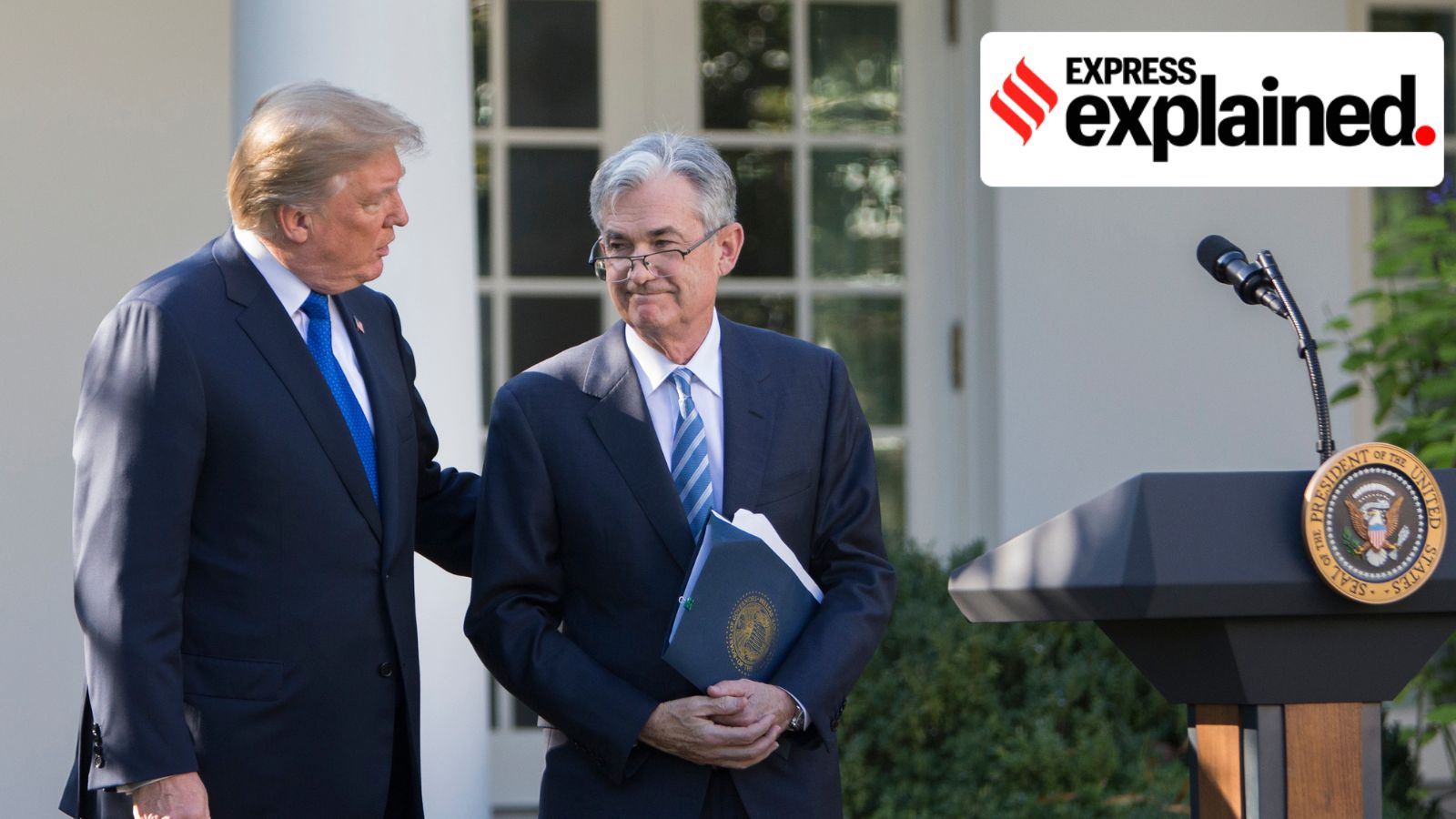Why Trump cannot fire Fed chair Powell, at least not yet
A landmark 1935 ruling of the Supreme Court, now under review, effectively limits the power of the White House to dismiss top federal officials
 President Donald Trump with Jerome Powell, then his nominee to chair the Federal Reserve, at the White House in 2017. (NYT)
President Donald Trump with Jerome Powell, then his nominee to chair the Federal Reserve, at the White House in 2017. (NYT)After publicly lashing out at Jerome Powell, chairman of the US Federal Reserve, for not lowering interest rates, President Donald Trump is said to be exploring options to force the Fed chair’s exit.
But this will not be easy. A landmark 1935 ruling of the Supreme Court effectively limits the power of the White House to dismiss top federal officials. However, in a matter that also involves Trump, this ruling may be overturned in the near future.
FDR & Humphrey
In 1933, President Franklin D Roosevelt launched the so-called “New Deal”, a set of sweeping Keynesian economic reforms instituted to combat the effects of the Great Depression. This marked an official end of “laissez-faire” capitalism — one in which the government largely stayed away from matters of the economy — in the US.
For implementing such a tectonic shift in the United States’ economic policy, FDR needed top federal officials to toe his line. But not everyone was keen to, including William E Humphrey, one of the five commissioners of the Federal Trade Commission.
A former Republican Congressman, Humphrey had been appointed to the post in 1925 by President Calvin Coolidge, perhaps best known as a champion of the free market. He was reappointed for a seven-year tenure by another Republican, President Herbert Hoover, in 1931.
After trying in vain to force Humphrey’s resignation, FDR fired him, ignoring a rule that allowed the President to remove a commissioner or agency head only for “inefficiency, neglect of duty, or malfeasance in office”. Humphrey appealed his dismissal to the Supreme Court, and sought compensation for his continued employment.
The 1935 ruling
He died in 1934, but his executor (the person entrusted with managing his estate) proceeded with the case. The ensuing lawsuit, Humphrey’s Executor v United States, would establish a lasting precedent for handling the dismissals of top federal bosses.
The 1935 ruling found that the President did not enjoy “illimitable power of removal” of officials heading agencies created by Congress (such as the FTC). Specifically, it established that they cannot be removed for political reasons alone. The ruling also reaffirmed such agencies’ independence from the White House.
“For it is quite evident that one who holds his office only during the pleasure of another cannot be depended upon to maintain an attitude of independence against the latter’s will,” Justice George Sutherland held.
Relying on Humphrey’s Executor, Congress has over the years created and expanded powers of multiple similar agencies, including the Federal Reserve (which functions like central banks in other countries). The Fed sets the United States’ monetary policy, and is supposed to act based on economic logic rather than partisan motivations.
Trump v Wilcox
Cut to the present. In February, Trump fired Gwynne Wilcox, a Democrat member of the National Labor Relations Board (NLRB), as well as Cathy Harris, a Democrat member of the Merit Systems Protection Board (MSPB).
They successfully took the matter to the courts, which ordered their reinstatement. However, the Supreme Court on April 10 issued an order that temporarily blocked these lower court rulings. The court will now consider the case, Trump vs Wilcox, as well as the merits of its 1935 ruling which lower courts cited to order the employees’ reinstatement.
Note that the Conservative majority Supreme Court has long held a cynical view of the implications of Humphrey’s Executor — that the President is not all powerful even in the executive. Past rulings of the Conservative apex court have championed the so-called “unitary executive” theory, which, in its strongest form, would give presidents legal control over every federal job that’s not part of Congress or the judiciary.
And if indeed the court decides to overturn Humphrey’s Executor in its verdict on Trump v Wilcox, it may open up an avenue for the President to hire and fire any federal official at will — including Fed chair Powell.
Consequences anyway
Not that firing the Fed Chair — even if the Supreme Court gives him the green light — would not be without consequences.
“… Granting the president that power would effectively eviscerate the central bank’s independence by making its seven governors, including the chair, at-will appointees of the president, like the Treasury secretary,” The Wall Street Journal reported on Wednesday (April 16). “Investors would henceforth conclude that monetary policy no longer solely reflects the Fed’s judgment about inflation, employment and financial stability, but also the president’s priorities.”
This would undermine the Fed’s long-held reputation of being the world’s most powerful central bank, one that has historically enjoyed a good degree of autonomy from political influence. This has also historically kept investors confidence in the US dollar, which today is the world’s foremost reserve currency.
At a time when Trump’s tariffs have sent the global economy in a spiral, and dealt blows to the United States’ credibility and reliability as a trade partner and the leader of the Free World, undermining the Fed’s independence could lead to countries seeking to de-dollarise, that is, seek a new reserve currency.
- 01
- 02
- 03
- 04
- 05






































